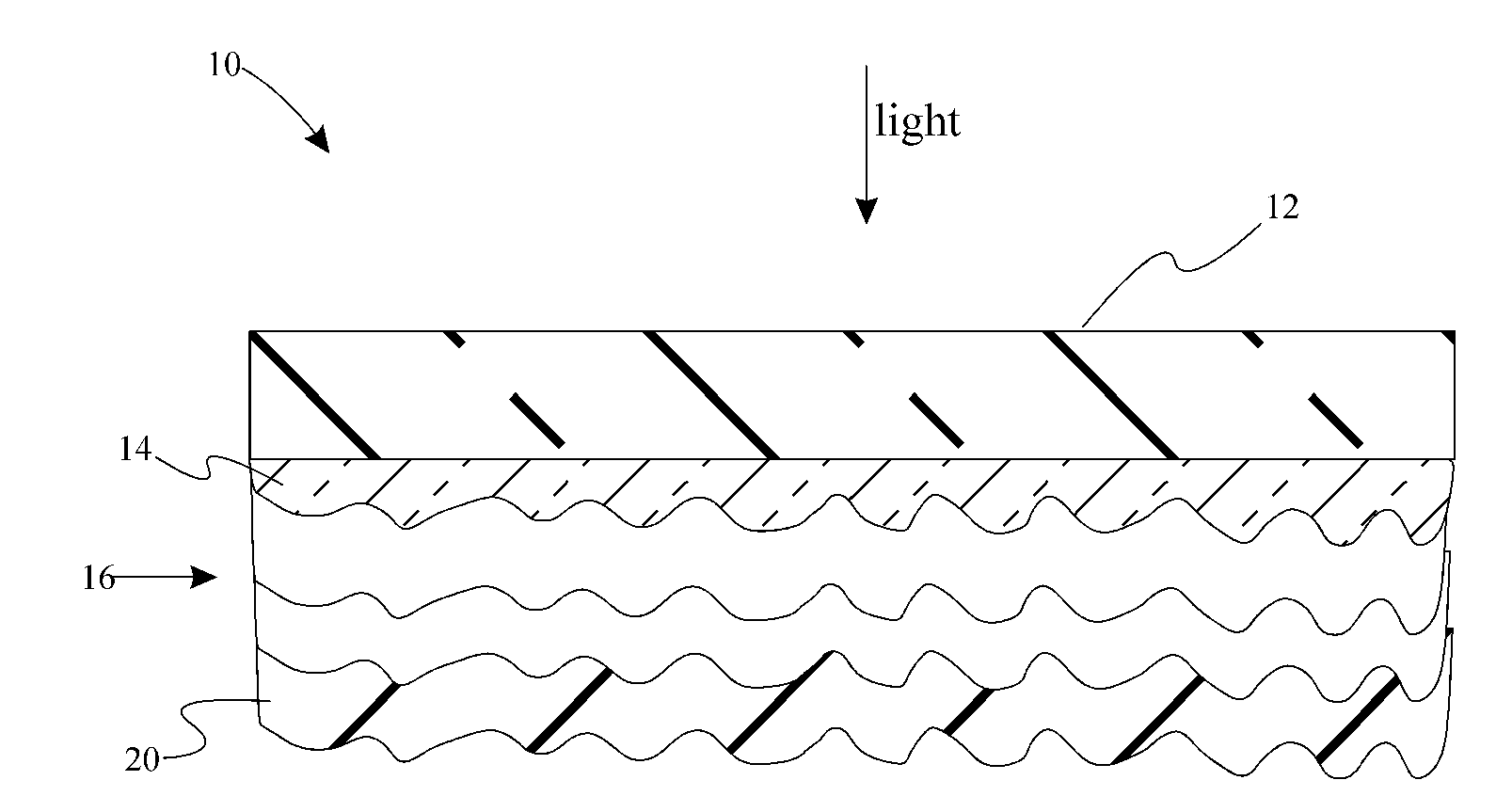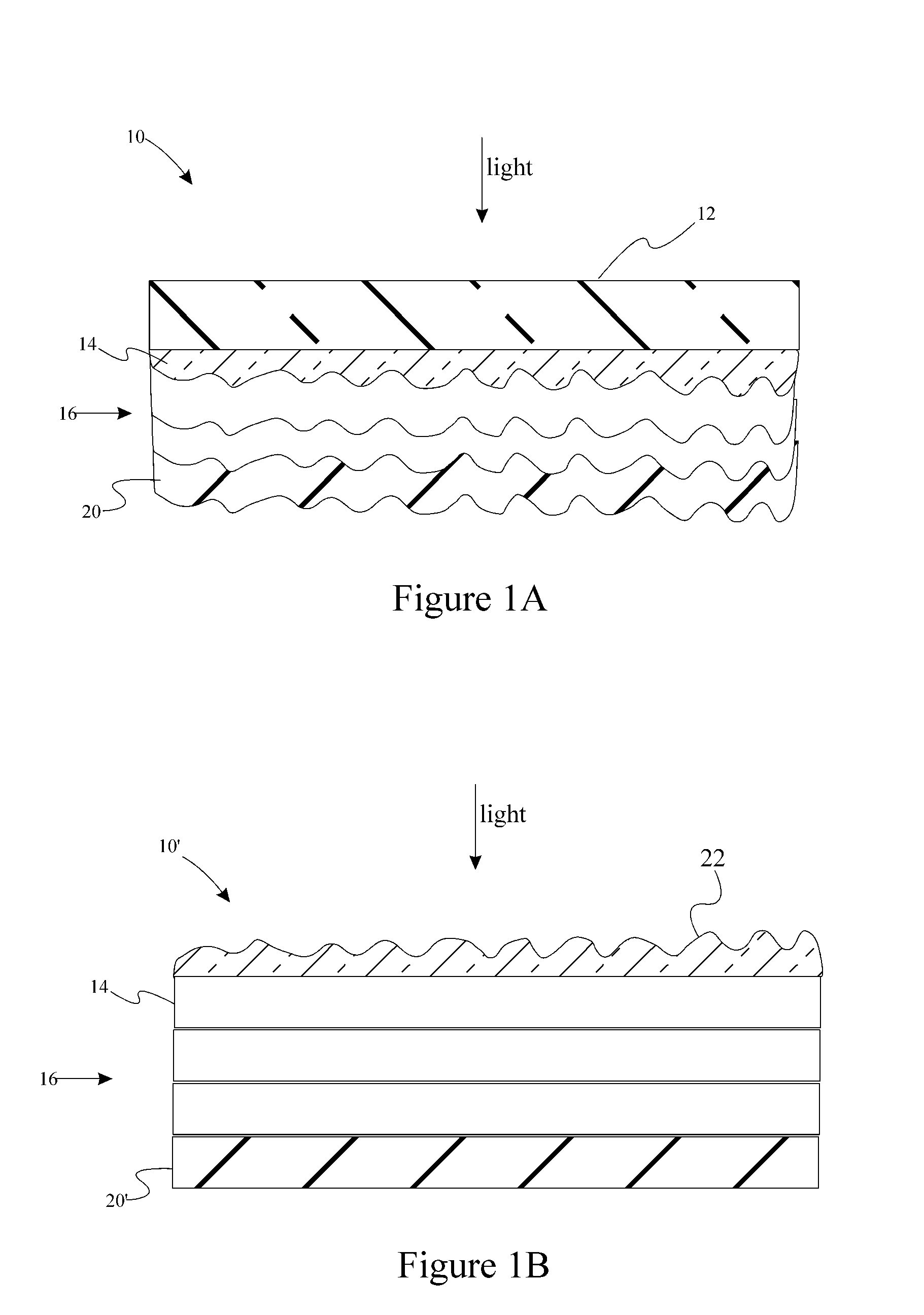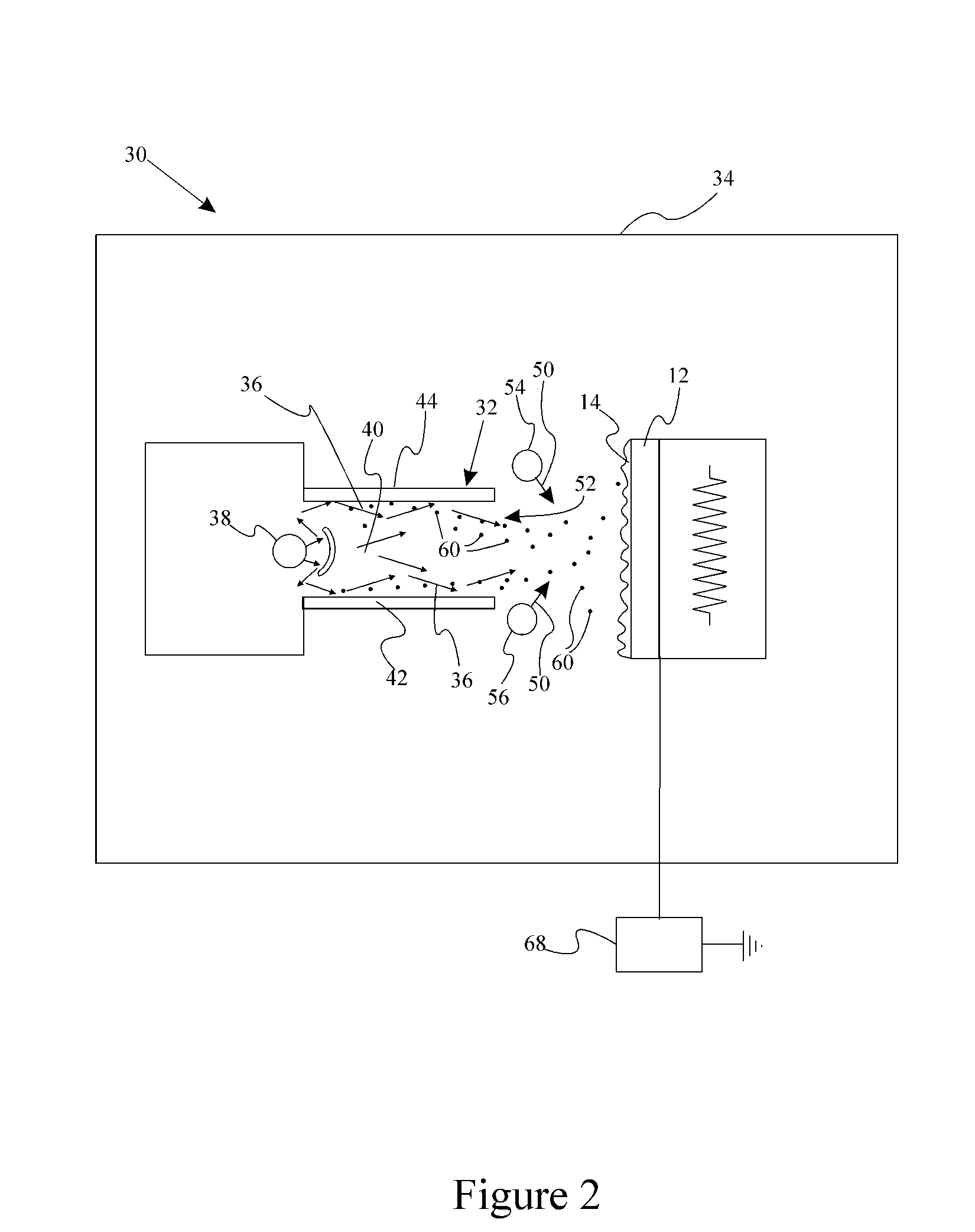Method and process for deposition of textured zinc oxide thin films
a technology of textured zinc oxide and thin film, which is applied in the direction of vacuum evaporation coating, coating, semiconductor devices, etc., can solve the problems of unstable material, low cost of photovoltaic production industry, and darkening of tin oxide tco, and achieves low cost and large coating width
- Summary
- Abstract
- Description
- Claims
- Application Information
AI Technical Summary
Benefits of technology
Problems solved by technology
Method used
Image
Examples
example # 1
Example #1
[0054]An RE-HCS deposition system containing a linear hollow cathode was fitted with two facing Zn targets 11.4 cm in length and 3.8 cm in breadth. The width of the exit slot so defined was 1.25 cm. An Ar flow of 2 slm was used as the working gas. The reactive gas was water carried by about 100 sccm Ar from a bubbler. The doping element is supplied by sputtering a separate Al bar. Mid-frequency pulsed (bipolar) power was applied on Zn target and Al bar at 100 kHz at a level of 300 W and 100 W, respectively. The chamber pressure was 170 mTorr. The substrate temperature was 230° C. The substrate bias is −80V by RF power. A 1.7 μm ZnO:Al film was grown in 30 minutes using 22 passes across the cathode. The sheet resistance was 4.12 ohm / square corresponding to a film resistivity of 7.0×10−4 ohm-cm. The film was found to be strongly textured as shown in the scanning electron micrograph of FIG. 3. Further analysis by atomic force microscopy revealed the RMS surface roughness to b...
example # 2
Example #2
[0055]The deposition set-up is similar to example #1. An Ar flow of 2 slm was used as the working gas. The reactive gas was water vapor supplied without an Ar carrying gas. Mid-frequency pulsed (bipolar) power was applied on Zn target and Al bar at 100 kHz at a level of 300 W and 100 W, respectively. The chamber pressure was 170 mTorr. The substrate temperature was 240° C. A 0.99 μm ZnO:Al film was grown in 18 minutes using 13 passes across the cathode. The sheet resistance was 8 ohm / square corresponding to a film resistivity of 7.9×10−4 ohm-cm. The film was found to be strongly textured as shown in by scanning electron micrograph. Further analysis by atomic force microscopy revealed the RMS surface roughness to be 40 nm. FIG. 4 is an SEM micrograph of textured ZnO:Al film deposited by RE-HCS under the conditions described. For comparative purposes an SEM of zinc oxide from traditional RF sputtering is provided in FIG. 5.
example # 3
Example #3
[0056]A series of zinc oxide films were formed under various conditions using water or oxygen as the oxygen source. FIG. 6 provides an SEM of a 1 micron thick ZnO film deposited on a substrate at a temperature of 230° C. using water as the oxygen source. The film formed under these conditions had a root mean square (RMS) surface structure of 40.7 nm. FIG. 7 provides an SEM of a 1 micron thick ZnO film deposited on a substrate at a temperature of 230° C. using water as the oxygen source. The bias used for this deposition was −80 V. The film formed under these conditions had a RMS surface structure of 30 nm. FIG. 8 provides an SEM of a 1 micron thick ZnO film deposited on a substrate at a temperature of 230° C. using molecular oxygen as the oxygen source. The bias used for this deposition was −80 V. FIG. 9 provides an SEM of a 1 micron thick ZnO film deposited on a substrate at a temperature of 160° C. using molecular oxygen and water as the oxygen source. FIG. 10 provides a...
PUM
| Property | Measurement | Unit |
|---|---|---|
| Temperature | aaaaa | aaaaa |
| Temperature | aaaaa | aaaaa |
| Temperature | aaaaa | aaaaa |
Abstract
Description
Claims
Application Information
 Login to View More
Login to View More - R&D
- Intellectual Property
- Life Sciences
- Materials
- Tech Scout
- Unparalleled Data Quality
- Higher Quality Content
- 60% Fewer Hallucinations
Browse by: Latest US Patents, China's latest patents, Technical Efficacy Thesaurus, Application Domain, Technology Topic, Popular Technical Reports.
© 2025 PatSnap. All rights reserved.Legal|Privacy policy|Modern Slavery Act Transparency Statement|Sitemap|About US| Contact US: help@patsnap.com



